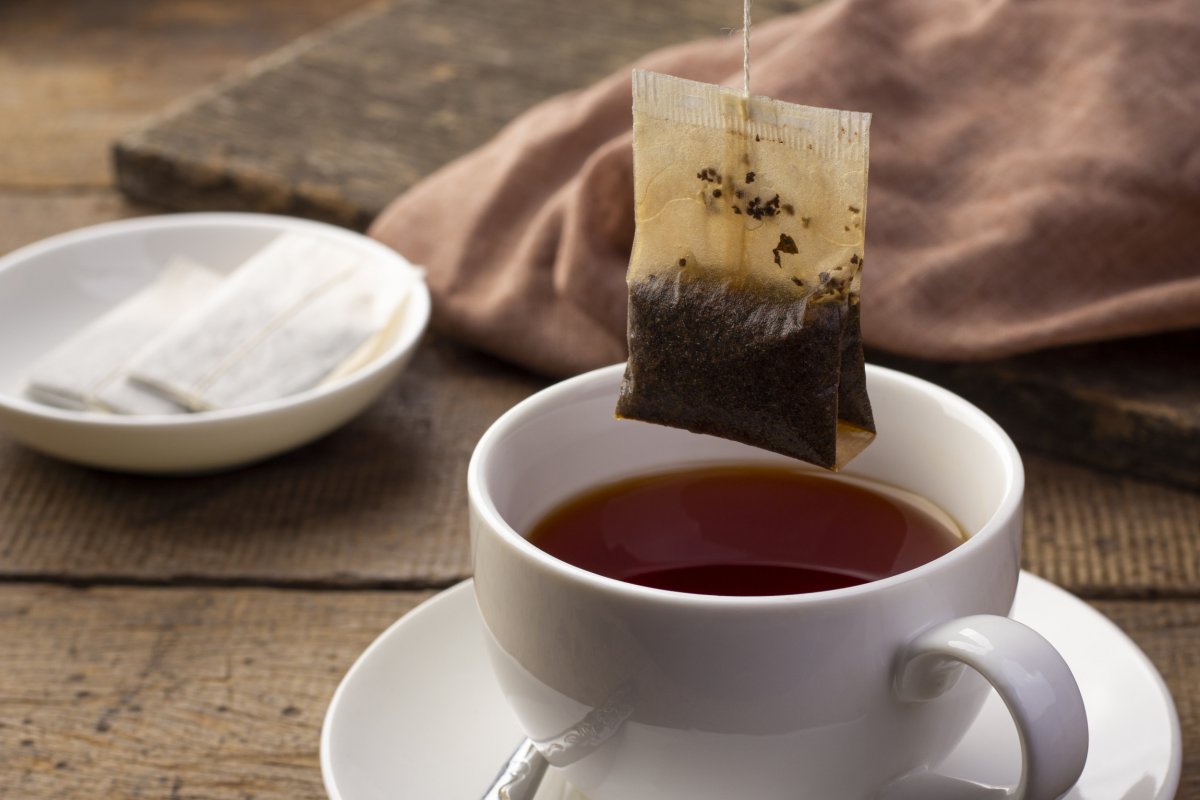Drinking tea from plastic-containing tea bags could expose you to billions of nano- and microplastics with every sip, putting your health at risk.
Many tea bags contain small amounts of tiny plastic particles called microplastics. When these interact with hot water, they can get released into the tea and end up being drunk.
Food, packaging and kitchenware are major sources of plastic pollution, but scientists do not yet know exactly how they impact our health.
However, they do know that they release chemicals called endocrine disrupters, which are believed to disrupt human hormones and increase the risk of certain cancers.
Microplastics may also increase the risk of cancers by interacting with genetic material in our cells.

Microbiologists at the Independent University of Barcelona (Universitat Autònoma de Barcelona, UAB), Spain, recently studied plastic released by three different tea bags and their effect on human cells.
Ricardo Marcos Dauder, one of the study authors from UAB, told Newsweek that, when scientists talk about microplastics, they don't just mean plastic that degrades and produces small pieces of plastic, but pieces of plastic that can be easily measured in micrometers: between 1 and 1000 micrometers, equivalent to one thousandth to one millimeter.
This study specifically looked at nanoplastics, measured between 1 and 1000 nanometers—which is even smaller.
"All the data shows that the smaller the size, the higher the uptake [of plastic] into the cells," said Dauder. "The smaller the size, the higher the risk."
The microbiologists found that commercially available tea bags released huge amounts of plastic particles into hot water when brewed, experimenting on tea bags made from three plastics: polymers called polypropylene, nylon-6 and cellulose.
They found that tea bags containing polypropylene released approximately 1.2 billion particles of plastic per drop—or milliliter—of tea. Those containing cellulosed released 135 million particles per drop and nylon-6 released 8.18 million particles per drop.
Then, the scientists stained the particles and exposed them to various cells from a human intestine, to track how they might interact inside the body once ingested.
After 24 hours, a specific type of digestive cell that produces mucus in the intestines had absorbed considerable amounts of micro and nanoplastics. The plastics had even entered the nucleus of some of these cells, which is where genetic material is kept.
This suggests that digestive mucus might play a key role in absorbing micro and nanoplastics into the body before they are transported into the bloodstream and elsewhere in the body.
Dauder said that nanoplastics could easily "cross biological barriers" into the blood and then affect different organs. Inside cells, they could disrupt mitochondria, the "energy factory" of each cell, and our DNA, increasing the risk of cancer.
"Carcinogenesis is really related to genotoxicity, or to damage to the DNA," said Dauder.
UAB scientist Alba García-Rodríguez described the research on plastic pollutants as "a very important tool to advance research on their possible impacts on human health."
"We are exposed everywhere to micro-nano plastics," said Dauder. "We don't need to be in special conditions, in special places, to be exposed. Something as simple as preparing a cup of tea is enough to ingest, every time that you drink a cup of tea, millions or more nanoparticles or nanoplastics.
"Tea bags are just one example of one particular route of exposure to these micro-nano plastics, but there are thousands of ways we can be exposed," added Dauder.
The team used a long list of cutting-edge techniques to track the microplastics, including electron microscopes, infrared technology, lasers and nanoparticle tracking analysis.
"The insights gained from this study should inform regulatory policies aimed at minimizing plastic contamination in food contact materials and protecting public health," the scientists wrote.
Dauder said that he hoped the research would be used to help regulate the use of single-use plastic, but added that the presence of micro- and nanoplastics meant we would struggle ever to completely clean up plastic pollution.
Do you have a tip on a food story that Newsweek should be covering? Is there a nutrition concern that's worrying you? Let us know via science@newsweek.com. We can ask experts for advice, and your story could be featured in Newsweek.
Reference
Banaei, G., Abass, D., Tavakolpournegari, A., Martín-Pérez, J., Gutiérrez, J., Peng, G., Reemtsma, T., Marc, R., Hernández, A., García-Rodríguez, A. (2024). Teabag-derived micro/nanoplastics (true-to-life MNPLs) as a surrogate for real-life exposure escenaris, Chemosphere, 368 (143736). https://doi.org/10.1016/j.chemosphere.2024.143736
About the writer
Hatty Willmoth is a Newsweek food and nutrition reporter based in London, U.K. She has covered special diets, gut health ... Read more



